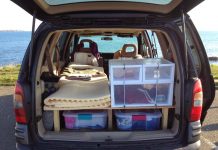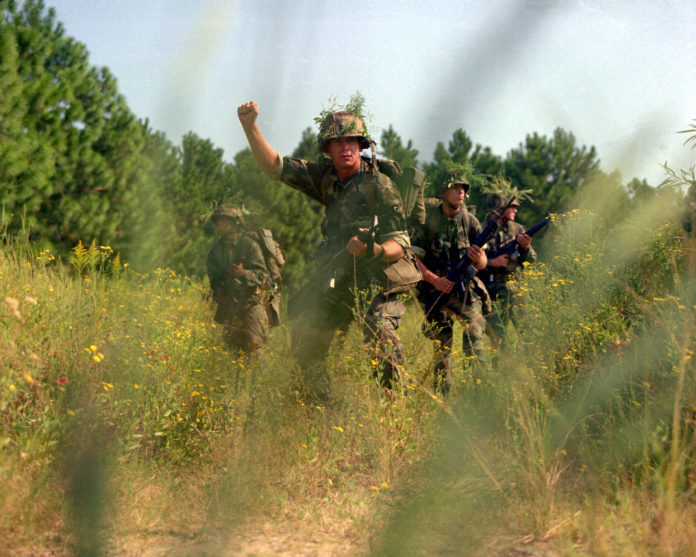

What do you do if you have to give someone instructions, but don’t want to make any noise? In a major crisis, criminal gangs and armed looters will probably be around, and plans to defend against them will have to be included in your preparation. Sadly, barricading yourself with a pile of ammunition in your house will not be enough to ensure your safety. What if you planted crops that you could not see from the house? Is your power supplied from a turbine or generator that intruders could reach undetected?
You will have to check your land and the surrounding areas regularly if you really want to be secure. Working with friends and neighbors will be the best way to do this, so you have enough people to scare or defeat threats. Sometimes you need to see a visible presence – someone standing at the entrance will suffice to make it easier for many scavengers to find a destination. Stealth will be needed other times. What if you know that there are a group of looters, and you want to find them without being detected in the area?
The problem is that working in a group means you need to communicate – and sometimes you need to do so silently. Especially in the night you can hear shouting instructions from a distance – including talking normally or using a radio. However, how can you communicate without a sound?
Related: Signalling Techniques That Could Save Your Life
It is a problem faced by armies over the centuries and the solution is they have to use signals by hand. When troops move, they want to keep visual contact with the men around them and they space themselves out to do so. Soldiers advancing in the daylight across open terrain may have an area of 15 or 20 meters; the woods in the night may fall to just 4 feet. The rule is that they are always sufficiently close to see at least the men on either side of them or on either side. This avoids separating and losing people – but also means that they can use silent hand signals to pass messages.
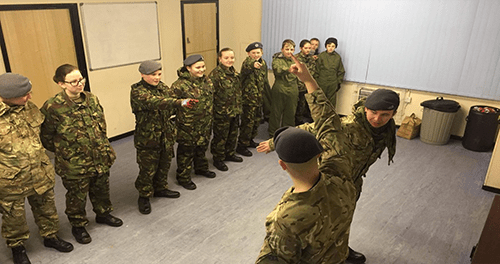

You will find dozens of sites explaining hundreds of signals if you google “tactical hand signals.” The problem is that most people find it far too complicated. In fact, for most soldiers who rehearse signals regularly in field exercises is too complicated. Many of the highly specialized ones that are found on-line by Special Forces or SWAT police teams. You need a handful of basic signals to perform simple patrols and security functions.
Here are the top ten signals in a post SHTF scenario that you need to tactically operate. All of them have been tried and tested by the U.S. and the British army and helped numerous soldiers to cope with the difficult times. Learn them, pass them on to your people, and they’re also going to help you.
Line formation
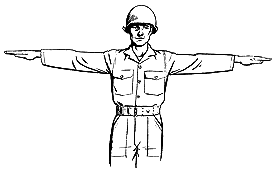

If you are looking for an open field or a sweep to find intruders, it’s the way to go ahead in a broad line. Silently tell all by holding out the two arms straight to the sides to stretch out. When you move, slow down or stop to let people catch you and move to your sides. Keep in mind that it is difficult to control a line; everyone has to look at the spacing and the new signals every few seconds.
File formation
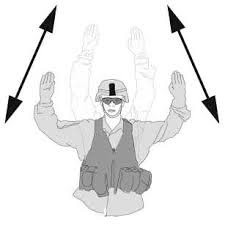

A line is not only difficult to control in the woods or in the high scrub, it is impossible. Signal that both arms are straight above your head to move into file formation. This shows a double file, ideal to move along roads or tracks – you have people willing to respond to trouble from either side with one file on each side of the track.
Turn to a single file on a very narrow track; hold one arm to order.
Enemy Seen/Not Seen
Hold an arm on the side, fist tightly clenched and thumb pointed to show you have seen a hostile or unidentified person. This is just a sign of being sighted by someone; it’s not a fire opening command. If you want to open fire, you should order it with a whistle, shouted command or just open fire it yourself. Check that everyone knows this in advance.
Hold one arm, fist tight, and thumb up to let people know that there are no hostiles in view.
Related: Why Having Multiple Bug-Out Bags Is A Great Idea
Slow
If you need everyone to slow down hold one arm out to your slide, angled down, with your hand flat and palm downwards. Slowly wave the arm up and down, then drop your own speed. Everyone should match their own speed to yours.
Telling people to slow down also warns them to be extra quiet and alert for possible trouble.
Stop
Stop moving by holding your hand up towards your people with the flat palm. Recall repeating the sign to both sides when you are moving into line and watch it being observed. When ever you stop, everyone should take a fire position so that you have all directions for observations and weapons. A kneeling position is good in woods or in long grass. Repeat the stop signal if you’re open ground and want everyone to go prone.
Move Out
Hold your hand high or higher up, palm it up and sweep it forward, to get moving after a stop. Make sure everyone gets the signal, and that chances of someone missing it and get left behind, especially in the woods, is surprisingly easy.
At The Double
If you want to pick up the pace hold one arm up vertically, then pump your fist up and down. Again, everyone should match their speed to yours.
On Me
Do you have to speak to anybody? Point on them, then put the palm of your hand on your own head. If you want to get everyone into a discussion, skip the pointing part – if this signal is given to one or more people without pointing, then everyone needs to close in.
Obstacle Ahead
If you notice an obstacle to the front, turn around and hold your arms, crossing your forearms. It will depend on the obstacle what you do next. If it is a road, move back into a line from the edge of the road, then cross it all together quickly on a signal. One by one, crossing a road splits your group and makes it more likely that you will see someone. If it’s a fence or river you have to defend one side then move people over to start defense as soon as possible on the other side of the river.
Related: Top 10+3 Apps That Might Save Your Life
RV/All Round Defence
To break, or to check that the map is not followed, turn your hand in a circle and point to the ground. Then stop and take a fire position in your direction. Everybody else should move up and start taking positions from yours in the clock direction until the whole circle is covered. The place you stop in is an appointment or an RV. Everyone should move back to and group the last RV if you are in trouble and have to separately.
Doing the same spot and spin signal if you do not plan to stop but want to mark an emergency RV location, then steal your finger twice down to the ground and continue to move. When you cross the same spot, your followers repeat the signal and let everyone know where to group if there is trouble. The usual exercise is to move everyone to the last reported RV if necessary; if that’s not far enough from the problem — for example, you’re in the last RV and people are still shooting at you — go back to the previous one.
Check out this video tutorial:
The great risk with hand signals is that someone will miss them. You can ask everyone to check in when giving voice or radio commands, as a verbal confirmation that they have the message. With hand signals this doesn’t work. It is important not only to give the message, but also to assume it was understood and transmitted, but to watch it repeat it to the next man when you give the signal to someone. You should not have problems if everyone does that and you can communicate and move in complete tactical silence.














